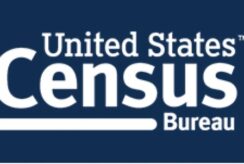Residential sales to non-citizens totaled $74 billion in the year through March, half of what it was three years ago
BY BECKIE STRUM | ORIGINALLY PUBLISHED ON AUGUST 6, 2020 | MANSION GLOBAL

A neighborhood in San Francisco.GETTY IMAGES
Foreign buyers spent 5% less on U.S. housing over the past year, the third consecutive year of falling sales, as Chinese investment continues to decline.
Such buyers, which include both non-citizen residents in the U.S. and foreigners, spent a total of $74 billion between April 2019 and March 2020—down from nearly $78 billion the previous year. Foreign spending in the U.S. residential market has halved since a 2017 high of $153 billion, according to the National Association of Realtors, which conducts an annual survey of its member agents to gauge the international market.
The annual survey, released Thursday, covers only sales of existing homes, of which international buyers make up a small and diminishing proportion of the U.S. residential market. Foreign buyers accounted for only 4% of existing home sales, down from 5% in the 2018-19 survey. The survey also predated most of the global Covid-19 pandemic, which has thrown a wrench in housing markets the world over.
Still, foreign buyers play a key role in a few U.S. housing markets, especially in Florida and California, and help drive new development sales in big cities, such as Miami and New York.
More: 15,000-Acre California Ranch Asks $38 Million
Chinese buyers, which include Hong Kongers and Taiwanese, have risen in recent years to become the biggest spenders on U.S. homes. But growing political and economic disputes between the U.S. and China, in addition to a strong dollar and tightened border restrictions, have curtailed Chinese investment here. They spent about $11.5 billion on existing homes in the year through March 2020, one-third of the $30 billion-plus spent in 2017 and in 2018, according to past NAR surveys.
https://tpc.googlesyndication.com/safeframe/1-0-37/html/container.html
The annual survey, released Thursday, covers only sales of existing homes, of which foreign buyers make up a small and diminishing proportion. Foreigners accounted for only 4% of such sales, down from 5% in the 2018-19 survey. The survey also predated most of the global Covid-19 pandemic, which has thrown a wrench in housing markets the world over.
Chinese buyers paid the highest purchase price per home of any cohort, spending a median $449,500, compared to a median sale price of $274,600 for all sales in the year through March 2020.
“Foreign buyers and recent immigrants have become less of a force in the U.S. housing market over the last couple of years,” said Lawrence Yun, NAR’s chief economist.
https://platform.twitter.com/embed/index.html?dnt=false&embedId=twitter-widget-0&frame=false&hideCard=false&hideThread=false&id=1290656986317684736&lang=en&origin=https%3A%2F%2Fwww.mansionglobal.com%2Farticles%2Fforeign-investment-in-u-s-homes-continues-to-decline-218205&siteScreenName=mansionglobal&theme=light&widgetsVersion=219d021%3A1598982042171&width=550px
A U.S. housing shortage, which is also discouraging domestic home buyers, is part of the problem, though there are other economic factors at play, Mr. Yun added.
“Less cross-border travel, falling international trade and fewer foreign students attending American universities are impacting foreign homebuyers,” he said.
Investment increased, however, from North American neighbors.
Canadians, who a decade ago were the primary source of foreign home sales, were the second-biggest investors, spending about $9.5 billion in the year through March 2020, an increase of about $1.5 billion.
Mexicans also upped their investment in U.S. housing over the past year, spending about $5.8 billion, an increase of more than 50% from the previous year. Indians and Colombians, the third and fourth biggest buyer cohorts, respectively, also increased their spending on U.S. homes.
The importance of foreign investment in driving local home sales varies dramatically from region to region, and even city to city. One in five sales to foreigners took place in Florida, according to the survey. About 15% of all foreign investment took place in California, and 9% in Texas. New York and New Jersey round out the top five destinations for foreign buyers.
Such buyers also play an outsized role in the luxury segment. Of the 154,000 homes sold to foreigners over the past year, 8% went for $1 million or more. For comparison, million-dollar-plus homes account for only 3% of all existing-home sales in the U.S.
They’re also twice as likely to pay all-cash. Cash accounted for 39% of foreign purchases, compared to 19% of home sales.
Multiple forces have combined to stymie foreign investment in the U.S. housing market. In addition to trade wars and Chinese capital controls affecting Chinese investment, a strong dollar has made it harder for overseas investors to afford U.S. real estate, which has seen explosive growth in prices over the past decade.
From Penta: MacKenzie Scott Becomes the Second-Largest Funder for Racial Equity
A decline in international tourism, especially a steep drop-off in the number of Chinese travelers, has also worked against foreign investment.
There’s little telling how the international crisis will affect cross-border home sales, but there are reasons to believe it could open up opportunities in the U.S. market for international buyers, Mr. Yun said.
Vince Malta, NAR’s president and a broker at San Francisco-based Malta & Co., said interest from foreign buyers is present despite the crisis.
“Interest in U.S. real estate from international buyers remains strong overall,” he said in the report, “especially in the most affordable metropolitan areas.”
https://www.mansionglobal.com/articles/foreign-investment-in-u-s-homes-continues-to-decline-218205




